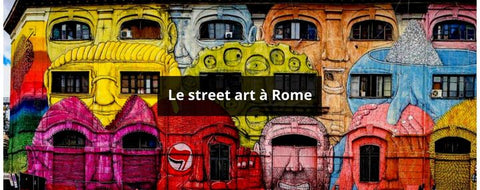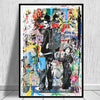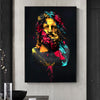
Andy Warhol, Marilyn Monroe, His Iconic Painting
During his lifetime, Andy Warhol always linked his art to the notion of celebrity . It is often said that Andy Warhol was able to capture in his works the allure of global celebrity and its effects on contemporary society.
In reality, the painter was fascinated by the stars, it-girls and famous actresses of the time, whom he often immortalized in his works of art, which have now become timeless.

Although Warhol's early work focused on the " love" story between postwar America and consumerism (which explains his obsession with Campbell's soup cans and Coca-Cola bottles), Warhol's most publicized works featured female celebrities.
By using his silkscreen techniques to scribble over the iconic features of female faces, Warhol helped make these celebrities even more popular, even after his death.
1) Marilyn Monroe: Warhol's work of recognition
Portraits of Marilyn Monroe are obviously the most popular with the general public and art galleries, but Warhol also included other women in his works such as Liza Minnelli, Joan Collins, and Debbie Harry.
It was in Studio 54, the famous Manhattan nightclub where he made headlines in the 70s. His success is mainly due to one model: Marilyn Monroe, who was the ultimate work for Andy Warhol .

2) Warhol and Monroe, masters of Pop Art
Warhol's Marilyn Diptych exemplifies everything Pop art represented at the time, thanks to its explicit reference to Marilyn Monroe, an icon of American pop culture. Pop art began its movement in London with a group of independent artists drawn to advertisements that depicted American mass culture and materialism.
In this respect, everything related to mass culture, whether music, advertising, or dance, becomes subject to multiple re-evaluations. Warhol's Marilyn Diptych, therefore, would not have existed without the inspiration of British pop art .

Warhol's depictions of women and stars of the era explored the relationships between consumer society, fashion, celebrity, sensationalism, and death. It is also said that his working style referenced a society in which individuals were viewed as mere products rather than human beings.
3) Andy Warhol at the dawn of a new artistic movement
Andy Warhol was a major figure in modern art ; his contribution to art had such an impact that even today the world remains fascinated by his pop art style. Andy Warhol became such a pillar of contemporary art that in 2013, one of his works sold for $105 million at a Sotheby's auction.

Born to Slovak immigrants, Andy did not have an easy childhood. He suffered from Sydenham's chorea, which caused him a host of medical problems that often forced him to miss school.
As a child, he was often separated from his peers and frequently remained alone. His style was also influenced by the people he saw on television, but it was only after joining the Carnegie Institute of Technology that he began to build his body of work.
4) Projecting prints, Andy Warhol's iconic style
Projecting prints was an integral part of Warhol's style. This mainly involved using mesh screens to transfer ink onto the canvas, leaving areas that had been stenciled uninked. He repeated this process using different colors and stenciled patterns several times until the canvas was completely saturated.

Andy Warhol, along with other pop art artists, but also street artists , really liked to use this technique because it was the most efficient way to produce mass prints long before the advent of laser jet printers.
5) Screen printing: the success of the Marilyn Monroe artwork
Screen printing defined Warhol's style and career; he rarely used any other medium in his work. It was this style that he also applied to the recognizable "Marilyn" prints, which he created as an intense reflection of his thoughts on celebrities and other social figures.

Just as Warhol's fetishistic use of consumer-produced packaging often sparked much debate and discussion, so too did his obsessive interpretation of famous women.
6) Female beauty fascinates Warhol
Warhol loved women despite being homosexual. He seemed to appreciate their form more than other artists around him, and he chose to celebrate these women by transforming them into icons of beauty and sophistication. Thanks to this pronounced taste, he would leave his mark on art history.

Because celebrities like Liza and Marilyn had something otherworldly about them, Warhol always wanted his women to look like true beauties. Thus, there were never any dark circles under the eyes, acne, or furrowed brows on his beauties, because he had to present them exactly as society saw them (perfectly) in his silkscreen prints.
7) Warhol's portrait of Marilyn Monroe
Marilyn Monroe was and remains one of the greatest sex symbols of all time. During her lifetime, her personal life was more publicized than her professional life. She had already been married several times and, like many of her fans, Warhol had become fascinated by her.

It was pure coincidence that Warhol chose Monroe to feature in his first and perhaps most famous pop art works. Although she had already taken her own life by the time the painting was created, her face and celebrity provided Warhol with an excellent basis for his repetitive print and animation-like works in the future.
8) Monroe's silkscreen printing as a trademark
As mentioned above, Warhol's photographic silkscreen had already reached maturity by 1962 and had even begun to become his signature style. Warhol even considered retiring from painting altogether.
For his portrait of Marilyn, Warhol created the famous movie star 's portrait from a publicity photograph he knew almost no one would recognize from the 1953 film Niagara. Warhol's Marilyn Diptych was created from 2 silver canvases on which Warhol silkscreened an image of Monroe 50 times.

In his Marilyn Monroe series, contrary to normal expectations, Warhol created the Monroe diptych by first painting the canvas with different colors before silkscreening the now-famous image of Marilyn onto the canvas. The misalignment of the silkscreen and the paint resulted in a dynamic surface, which he then enhanced using a spectrum of colors.
This act of printing and painting in multiple variations allowed Warhol to play with and explore the range of graphic possibilities that this single image of Marilyn could produce. Warhol demonstrated his extraordinary use of color by adding hues daytime and metallic paints that are not commonly found in contemporary art.
9) A diptych duplicated across a row of 5 Portraits
The five rows of the diptych resemble cartoon strips, acknowledging her iconic status. The repetition of her image symbolizes mass production, while the diptych style used in the portrait draws inspiration from Byzantine icons of Christian saints. By placing the portraits of Marilyn Monroe in the diptych, Warhol commented on the sacred nature that fans attribute to celebrities, which draws the public closer to them. in intrusiveness and immortality.

Of course, Warhol's images of his female models are among his most striking and constitute a considerable part of his work. Many have described his series of portraits of female celebrities as reductive and anti-feminist. This is due to the emphasis placed on his subjects' lips, hair, and eyeshadow, which makes them appear one-dimensional and superficial.

Although deeply fascinated by their professional lives, Warhol was also interested in the struggles and suffering these women endured behind their painted smiles. Thus, Warhol painted Marilyn just two weeks after her suicide.
10) Warhol and the cult of celebrity
Warhol's art was created to remind the public and fans that there was, in fact, a real person behind all the fame. Perhaps he wanted to depict to the world that these famous women were ordinary human beings who experienced pain and suffering, despite their celebrity.

This diptych can also be seen as both a celebration and a satire of the world's obsession with materialism and celebrity. It was simultaneously a cult and an analysis that both criticized and encouraged a culture that had become obsessed with money and fame. At the same time, Warhol also used Marilyn to critique himself, as he sought the same celebrity and notoriety as his subjects.
11) Marilyn Monroe, a saint in Andy Warhol's eyes
Although he took care to conceal his faith throughout his career, the Marilyn Monroe diptych is believed to have been explicitly religious: Marilyn Monroe appears in the painting as a superhuman figure, almost a saint. Thus, Marilyn was used to represent a martyr who has remained unchanged and immaculate to this day, even as the rest of contemporary society continues to rot and decay.

When the public and viewers needed to see the modern world they had created with fresh eyes, Warhol was always ready to intervene with an honest representation and assessment. In fact, the world's obsession with Marilyn Monroe never waned, and it's almost as if Warhol could see into the future. If he were here today, who knows who he would have chosen to focus on?
See you soon.
The Lofty Trend Team.







































